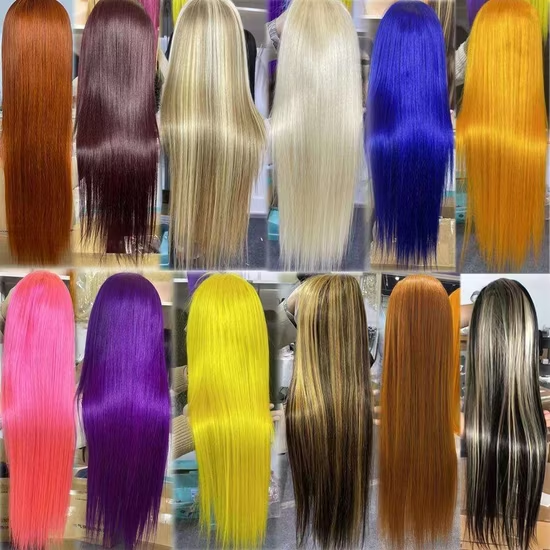People & Lifestyle
12 subtle behaviors of women who are thinking about leaving their relationship

While an “overcrowding” study from the European Journal of Population suggests there’s a multitude of reasons for an inevitable breakup, from closeness in a shared home to financial incompatibility, the real confusion about breakups stems from the gray area right before actually ending things. Who makes the first move? How do you express your feelings without hurting your partner? Is it possible to pull away and make things easier for everyone?
For female partners, there are some subtle behaviors of women who are thinking about leaving their relationship, and while they can be difficult to spot, they’re incredibly telling once you recognize them.
Here are 12 subtle behaviors of women who are thinking about leaving their relationship
1. She stops complaining or asking questions
 Stock Bakery | Shutterstock
Stock Bakery | Shutterstock
This subtle trait is typically the most common in relationships coming to a close. One or both partners are checked out, subconsciously separated from the other, and casual communication, curiosity, and even complaints have been dulled by constant silence and small talk.
Typically, partners who are unhappy in a relationship, especially a long-term or committed one, will express their emotions and discontent well before they’re ready to actually end things. The real question is: Was their partner listening?
At this stage, when a woman is truly thinking about leaving, they stop probing, asking questions, or complaining about their relational struggles. They’ve reached the point of feeling unheard, a communication promise that lies at the core of healthy relationships, according to 2023 research, where they no longer care to beg for attention or concern.
2. She no longer updates you on her life, plans, or goals
 ViDI Studio | Shutterstock
ViDI Studio | Shutterstock
It can be as simple as this, which might seem obvious, but for many partners immersed in the stress of work or a family, it can be easily overlooked. If a woman doesn’t update you on her life, she probably doesn’t care to.
We share the things we’re excited about with the people we love; it’s only human nature to yearn for connection, community, and shared experiences. When your partner actively forgoes sharing their accomplishments with you or keeps exciting goals to themselves, it’s probably because they don’t see you in their future when it will come to fruition.
3. She doesn’t return missed calls
 Dikushin Dmitry | Shutterstock
Dikushin Dmitry | Shutterstock
If your partner isn’t returning your missed calls consistently, there’s a good chance it’s because they ignored them in the first place.
Healthy partners who are committed to each other show up and relay a similar communication to one another, even if they’re going through a rough patch. Partners who are checked out, uncommitted, and confused about their relationship fitness do the opposite — they retreat, self-isolate, or simply refuse to communicate in an effort to create distance, whether they’re aware of it or not.
4. She stops hanging out with your friends and family
 Bagus Production | Shutterstock
Bagus Production | Shutterstock
According to social psychologist Theresa E. DiDonato Ph.D., your partner’s family opinions on you are incredibly important for shaping not only your future family get-togethers, but the health of your personal relationship.
If your partner stops investing time into seeing and communicating with them, there’s a good chance they no longer care about protecting that bond, painting themselves in a good light, or wasting their own energy trying to appease you. They likely aren’t doing this from a malicious perspective, but rather a self-preserving one to protect their own space.
Partners that actively distance themselves from your inner circle aren’t interested in promoting a healthy balance of connection and community — and that should say enough.
5. There’s a surprisingly new lack of intimacy
 fizkes | Shutterstock
fizkes | Shutterstock
With many harmful societal expectations about physical intimacy, especially for women, it’s not uncommon for many to misguidedly “withhold” it in an attempt to communicate with an otherwise unapproachable partner. In relationships, this dynamic is incredibly toxic, and only further insinuates harmful rhetoric that women are less interested in intimacy than men.
The reality is, there’s a million reasons why a woman might not want to be physically intimate, from her health, to her emotional well-being, and yes, even her interest in her partner. Of course, a period of time without it isn’t always indicative of the end of a relationship, but for partners, it might be a great time to get introspective.
When it comes to emotional expressivity and general relationship satisfaction, women tend to view their own intimacy in their couples’ negativity, while for men, it’s more positive. In these same couples, revealed in a study from Pepperdine University’s Journal of Communication Research, women valued supportiveness most in their partners, while men considered nonverbal affection and verbal affirmations most important.
Are you expecting physical intimacy with your partner without supporting them in every other aspect of your life? Are you resentful towards your partner, simply for a break in physical intimacy? Introspection can serve everyone well.
6. Her spending habits change
 Dikushin Dmitry | Shutterstock
Dikushin Dmitry | Shutterstock
Experts, like the authors of a study published in the Journal of Consumer Research, argue that “financial infidelity” is just as harmful to relationships as cheating or romantic infidelity. When your partner starts to shift, hide, or misguide you about their spending habits, they’re sabotaging the trust you’ve built.
Many others suggest women who shift their spending behaviors in subtle preparation to break up might stop investing money into a shared space or splurging on self-care, and instead start saving money to start a new chapter in their lives.
7. She wants free time away from you
 Olha Nosova | Shutterstock
Olha Nosova | Shutterstock
According to psychotherapist and relationship expert Deborah Krevalin, LPC, LMHC, a partner who is falling out of love and ready to end their relationship is spending a great deal of time in their head. They’re not just thinking about their own emotional shift, but preparing themselves for a breakup that requires communication and honesty.
Being around their partner, that may or may not have contributed to their loss of feelings, can spark uncomfortability, meaning they’re likely spending more time alone or with friends. They’ll stop inviting you to the grocery store, spending time with you in the evenings, or planning dates. If you notice this shift, especially in a female partner, it might be time to make the decision: either communicate and grow back to a healthy place, or end things.
8. She doesn’t do chores or favors for you anymore
 Volodymyr TVERDOKHLIB | Shutterstock
Volodymyr TVERDOKHLIB | Shutterstock
Acts of service, defined by Dr. Gary Chapman in his book “The First Love Languages: How To Express Heartfelt Commitment To Your Mate,” is a daily commitment to your partner and a way to express love for them — even if it’s something as simple as doing the dishes or folding your partner’s laundry.
Especially in traditional cis-gender straight relationships, where the woman tends to adopt responsibility for the majority of household chores, a shift in these norms can be a sign that your relationship fitness is also changing.
Actions speak louder than words. If your partner stops doing nonchalant chores or forgoes practical acts of service like making you coffee in the morning or making the bed, it could be a sign that their needs are changing, or could even be one of the subtle behaviors of women who are thinking about leaving their relationship.
9. She doesn’t make you feel like yourself
 Krakenimages.com | Shutterstock
Krakenimages.com | Shutterstock
A subtle sign that’s just as important for her and yourself, a partner that’s no longer meant for you or invested in you is not going to make you feel good or healthy. Experts like psychology coach Diane E. Dreher Ph.D. argues that you might even feel emotionally and physically drained around a toxic person, who might also be your partner.
When resentment is brewing, people’s needs aren’t met, or a partner isn’t happy or fulfilled in their relationship, it’s going to shift their energy — and you’re going to feel it. Trust your gut instinct and the way you feel around your partner. If it doesn’t feel right, don’t ignore it.
10. She seems annoyed by you
 Diego Cervo | Shutterstock
Diego Cervo | Shutterstock
Energetic shifts in your baseline with your partner can tell you a lot about your relationship. Do you feel comfortable around them? Could you share an intense emotion with them and feel emotionally supported? Do you feel drained? Are you being painted as a burden in your own home or relationship?
Women who are emotionally detached from their relationships aren’t always going to be good at hiding it, and sometimes, they might not actively be hiding anything. Annoyance is a side effect of resentment, which is an unfortunate emotion that grows subtly and subconsciously behind connections for months (and even years) without showing itself.
11. She stops posting photos of you online
 Perfect Wave | Shutterstock
Perfect Wave | Shutterstock
A report by New York Times Customer Insight Group, titled “The Psychology of Sharing,” argued that we share posts online to nourish the connections, community, and relationships in our lives. While 73% of social media users share to meet people with similar interests online, nearly 78% post to communicate and share news with people in their lives they don’t see frequently.
If your partner stops taking and sharing photos of you, this might be their way of setting the stage to meet somebody new, but it could also be a subtle way to remind the people in their life that you’re not their priority or something they’re excited to talk about.
While social media might seem insignificant to many partners, for those that utilise it in their daily lives, it’s something to acknowledge, at the very least.
12. She excludes you from conversations
 Perfect Wave | Shutterstock
Perfect Wave | Shutterstock
As explained in a research article published in Plos One, feeling heard in a relationship is fundamental to cultivating a healthy dynamic where both partners feel understood, supported, and loved. When a partner stops providing space for you to vent, share your emotions, or express concerns, they’re sacrificing both your mental health and relationship fitness.
If you’re being cut off frequently in conversations with friends or even entirely excluded from conversations online, consider it a subtle reminder that you’re not being prioritized.
myjoyonline.com
People & Lifestyle
From Bekwai To The World: The Biography Of Apostle Kwadwo Safo, The Kristo Asafo Founder And Kantanka Automobile Innovator

Early Life And Education
Known as the “Star of Africa,” Apostle Dr. Kwadwo Safo Kantanka is a man whose life remarkably combines philanthropy, invention, and religion. He was born on August 26, 1948, in Bekwai, Ghana’s Ashanti Region, to petty merchant Madam Akosua Amoanimaa and farmer Opanin Yaw Safo. He gained the humility and curiosity that would ultimately determine his fate from his humble origins.
Kwadwo Safo attended the Ghana Technical Works Institute in Kumasi to pursue technical training following his completion of elementary and secondary school. He worked for companies including VALCO, West Africa Metals, and the French Africa Company in his early years as a welder and mechanic. He gained a solid foundation in engineering and mechanics from these experiences, but his life quickly took a different turn.


READ ALSO: BREAKING: Apostle Kwadwo Safo Confirmed Dead
Ministry And The Kristo Asafo Mission
Kwadwo Safo was called by God to devote his life to gospel preaching in 1969. On February 3, 1971, two years later, he established the Kristo Asafo Mission in Accra. In Accra New Town, what started out as a tiny prayer group swiftly expanded into a vibrant Christian ministry.
For fusing spirituality with real-world empowerment, Kristo Asafo gained notoriety. Apostle Safo placed a strong emphasis on discipline, independence, and applying one’s faith to day-to-day activities. The church grew throughout Ghana and even reached Ghanaian communities overseas under his direction. He was more than just a preacher to his followers. He served as a mentor who pushed them to further their spiritual development while also pursuing education, skills, and entrepreneurship.

Innovations And Industry
The vision of Apostle Safo went much beyond the pulpit. He started creating local car prototypes in the 1990s in an effort to demonstrate Ghana’s ability to compete on a worldwide scale. In 1998, his business, Kantanka Automobile, manufactured its first saloon automobile. Later models, such as the Onantefo series, demonstrated robustness, contemporary style, and regional inventiveness. Kantanka Automobile is a great representation of Ghanaian ingenuity today.
However, his inventiveness extended beyond cars. Additionally, Apostle Safo has created and produced locally manufactured robotics, television sets, sound systems, and even military-grade equipment. His creations demonstrate his conviction that Africans can use their own skills and resources to address their own problems.
Education And Human Development
Apostle Safo founded the Apostle Safo School of Arts and Sciences (ASSAS) in Awoshie, Greater Accra, because he believed that education was the key to the advancement of the country. The school fosters the development of young brains into leaders and innovators by providing courses in science, business, visual arts, and home economics. His legacy of developing ability via knowledge and skills has been carried on by the numerous successful careers of his students and protégés.



Philanthropy And Social Impact
An integral part of Apostle Safo’s work has always been philanthropy. On a regular basis, usually around his birthday, he gives money, food, and clothing to widows, orphans, and disadvantaged groups. He received a great deal of praise for his August 2024 payment of GH₵42,000 toward the medical expenditures of 14 female patients at the Komfo Anokye Teaching Hospital. Because of his scientific endeavors and social interventions, he has become a father figure to many.

Recognition And Legacy
The accomplishments of Apostle Safo have received recognition on a national and worldwide level. In the UK, he was given the GUBA Innovative Pioneer Award in 2017. In recognition of his contributions to science and engineering, he has also received academic distinctions, such as the title of Emeritus Professor.
Nevertheless, he has publicly bemoaned the fact that his efforts are sometimes underestimated in Ghana in spite of these honors. He has attacked the tendency to favor imported items over domestically produced ones, which hurts homegrown businesses. But his determination is unwavering. He remains committed to his goal of an independent Ghana, which drives his innovation, preaching, and charitable endeavors.


Conclusion
Apostle Kwadwo Safo is not just an inventor or a preacher. He is a trailblazing intellectual who has demonstrated how compassion, science, and faith can all work together to change society. He has broken down barriers and changed the lives of many people, starting from modest beginnings in Bekwai and going on to lead a church, an automobile firm, and an educational institution. His tale serves as a reminder to Ghanaians and all Africans that greatness starts with a vision and is fostered by tenacity, imagination, and an unwavering faith in God.
People & Lifestyle
The Fascinating History Of Wigs And Hair Extensions

Wigs and hair extensions may look like modern beauty essentials, but their roots go back thousands of years. Across cultures and generations, they have been worn for protection, style, identity, and even spirituality. Their story shows us how beauty and tradition are deeply connected, constantly evolving with time.
Ancient Egypt, Where It All Began
The earliest records of wigs date back to Ancient Egypt around 2700 BC. Egyptians shaved their heads for hygiene, but wigs were used to protect against the sun and add a touch of elegance. Wealthy citizens wore wigs decorated with beads, gold, and oils, while simpler versions were worn by the less privileged. This trend spread to Ancient Greece and Rome, where wigs became a symbol of beauty and social status.



Royal Courts And European Fashion
In the 16th century, wigs returned to the spotlight when Queen Elizabeth I of England popularized them at court. By the 17th century, King Louis XIV of France introduced the large powdered wig, which quickly became fashionable across Europe. These wigs were not only about appearance, they carried political and social weight. Judges, lawyers, and politicians wore them as symbols of authority, and in some countries this practice continues today.


From Victorian Elegance To Modern Glamour
By the 19th century, wigs became less common, but hair extensions rose in popularity. Victorian women used hairpieces to achieve fuller hairstyles. In the 20th century, wigs found a place in theater and film, helping performers transform instantly. The 1960s and 1970s saw wigs move into mainstream fashion, with celebrities embracing them as tools of self-expression. Synthetic fibers made wigs affordable and widely accessible, allowing more people to experiment with new looks.


Beyond Fashion And Style
Wigs and extensions have always held cultural and spiritual importance. In Orthodox Judaism, married women wear wigs, known as sheitels, for modesty. In many African cultures, wigs and braids are not just hairstyles but powerful symbols of heritage, age, and social standing. They are often used during traditional ceremonies to represent ancestry, identity, and pride.


Technology, Media, And A Global Industry
Today, wigs and extensions are more advanced and natural-looking than ever. Lace-front wigs, clip-ins, and high-quality synthetic fibers allow for effortless transformations. Social media and celebrity culture have also fueled demand, turning wigs into a billion-dollar global industry. However, discussions around ethical sourcing of human hair continue, raising questions about fairness and sustainability in the beauty market.



Wigs In Health And Confidence
Beyond fashion and tradition, wigs play a vital role in healthcare. Many people experiencing hair loss due to medical conditions such as alopecia or chemotherapy treatments rely on wigs to restore confidence and a sense of normalcy. In this way, wigs are not just about beauty, they provide emotional support and dignity during challenging times. The growing variety of natural-looking options ensures that individuals can find styles that truly reflect who they are.


The Future Of Hair Innovation
Looking ahead, technology will continue to shape the wig and extension industry. From 3D-printed wigs to eco-friendly synthetic fibers, innovation is making products more sustainable and personalized. Designers are also blending cultural traditions with modern fashion to create new trends that celebrate both heritage and creativity. The story of wigs and extensions is far from over, and the next chapter promises even more exciting transformations.


A Timeless Story Of Reinvention
From the deserts of Ancient Egypt to fashion runways and online platforms, wigs and hair extensions have never gone out of style. They have adapted to every era, reflecting beauty standards, cultural traditions, and personal expression. Their history reminds us that hair is more than appearance, it is identity, heritage, and creativity woven together.


People & Lifestyle
The Surprising History Of High Heels And Their Origins

When people think of high heels today, the image that often comes to mind is one of women’s fashion, glamour, and elegance. Yet the history of high heels is far more complex. In fact, these shoes were first created for men, serving practical, cultural, and political purposes long before they became linked to femininity.
The earliest evidence of high-heeled footwear dates back to 10th-century Persia. Cavalry soldiers wore shoes with elevated heels to keep their feet secure in stirrups while riding. The design was not about style but survival, giving riders better balance and control in battle. This functional footwear later traveled to Europe, where it quickly acquired new cultural meaning.

By the 16th and 17th centuries, European men had adopted high heels as a symbol of wealth, masculinity, and social rank. Height was strongly associated with authority, and heels offered a way to look taller and more imposing. King Louis XIV of France, famously known as the “Sun King,” wore elaborately decorated red heels, a privilege he restricted to his court as a sign of power and exclusivity. Heels became an essential part of noble fashion, with their height directly reflecting social standing.

High heels also carried a sense of gender fluidity in their early history. Both men and women wore them in European courts, though the designs differed slightly. While men’s heels were often heavier and sturdier, women’s were more slender and decorative. They were seen less as feminine accessories and more as unifying symbols of wealth and privilege.

The shift came during the 18th century, when changing ideas about gender roles influenced fashion. Men began moving toward more practical and understated clothing, abandoning flamboyant garments and footwear. Women, on the other hand, retained high heels as markers of elegance and sophistication. Over time, this association deepened, and by the 19th century, high heels were firmly considered women’s fashion.

Today, high heels remain one of the most iconic and controversial items of clothing. While many wear them for style, beauty, or professionalism, they have also sparked debates about comfort, health, and gender expectations. Yet their surprising history reminds us that what we now see as a symbol of femininity was once created for war, adopted by kings, and used as a proud marker of masculinity and power.

-

 News5 months ago
News5 months agoGH¢49m Spyware Scandal: Ex-NSB Boss’s Claims Lack Credibility – Bright Simons
-

 Opinion5 months ago
Opinion5 months agoA LETTER TO GES
-

 Showbiz5 months ago
Showbiz5 months agoBogo Blay – Woman (Produced By FimFim)
-

 Showbiz5 months ago
Showbiz5 months agoKofi Kinaata Honoured with “Youth in Entertainment” Award at 2025 Millennium Excellence Awards
-

 Sports5 months ago
Sports5 months agoEl Clásico Thriller: Barcelona Edges Real Madrid 4–3 in Seven-Goal Spectacle
-

 Showbiz5 months ago
Showbiz5 months agoWebz – Odo | MP3 Download
-

 News5 months ago
News5 months ago‘Not Chosen by Merit’ – Ghanaian Prophet Predicts Short Papacy for Pope Leo XIV
-

 People & Lifestyle5 months ago
People & Lifestyle5 months agoThe differences between ‘I love you’ and ‘I’m in love with you’






















































